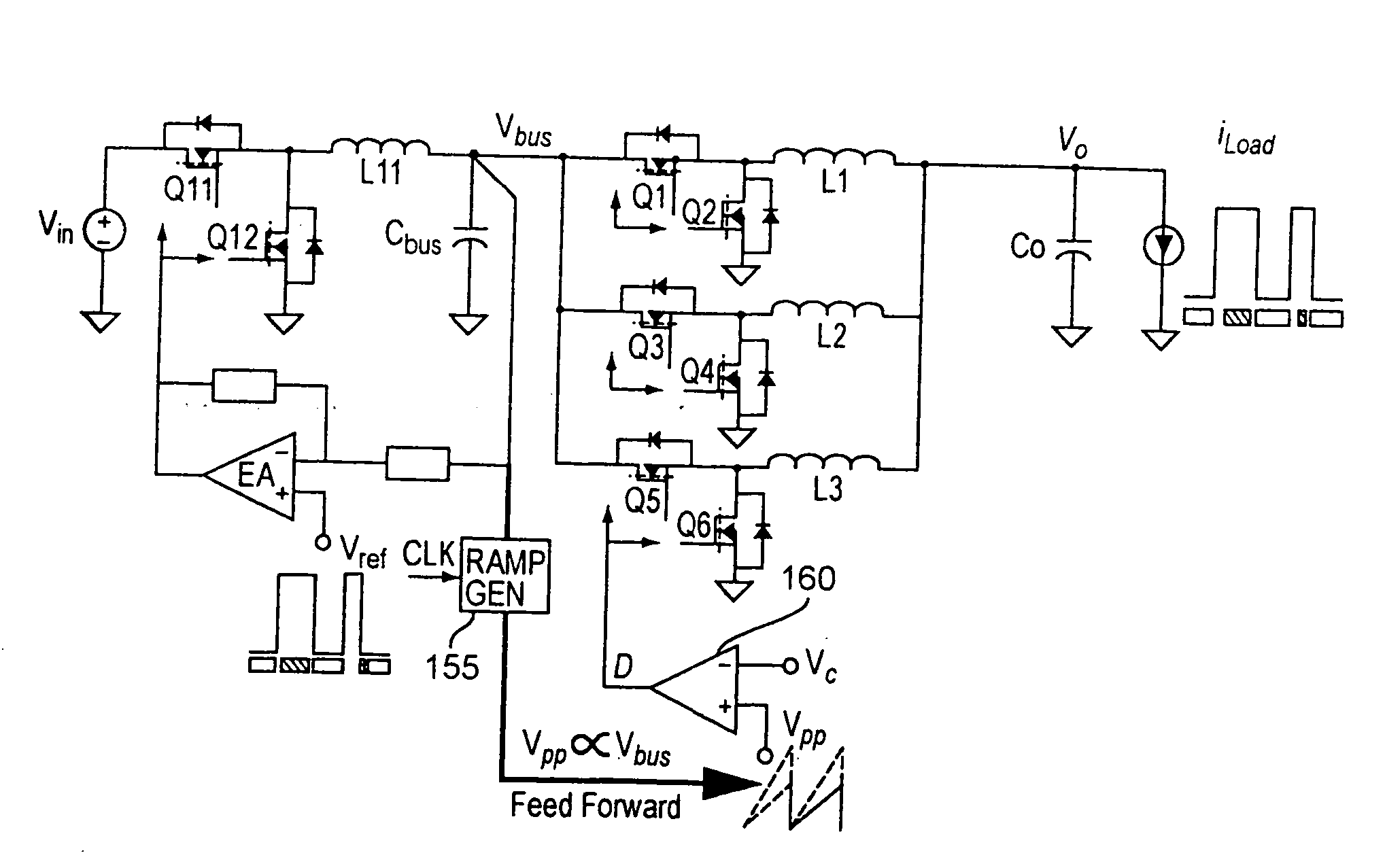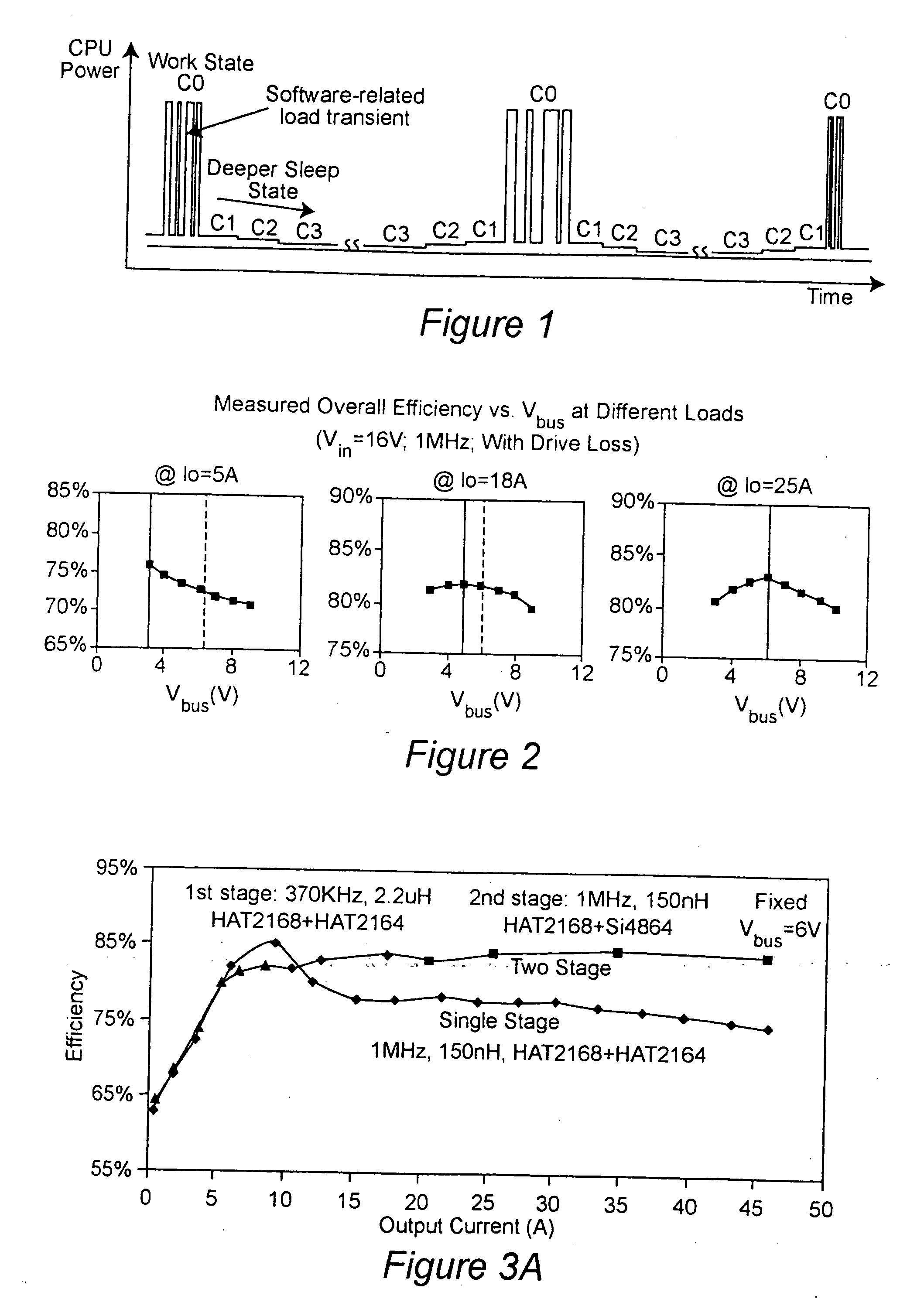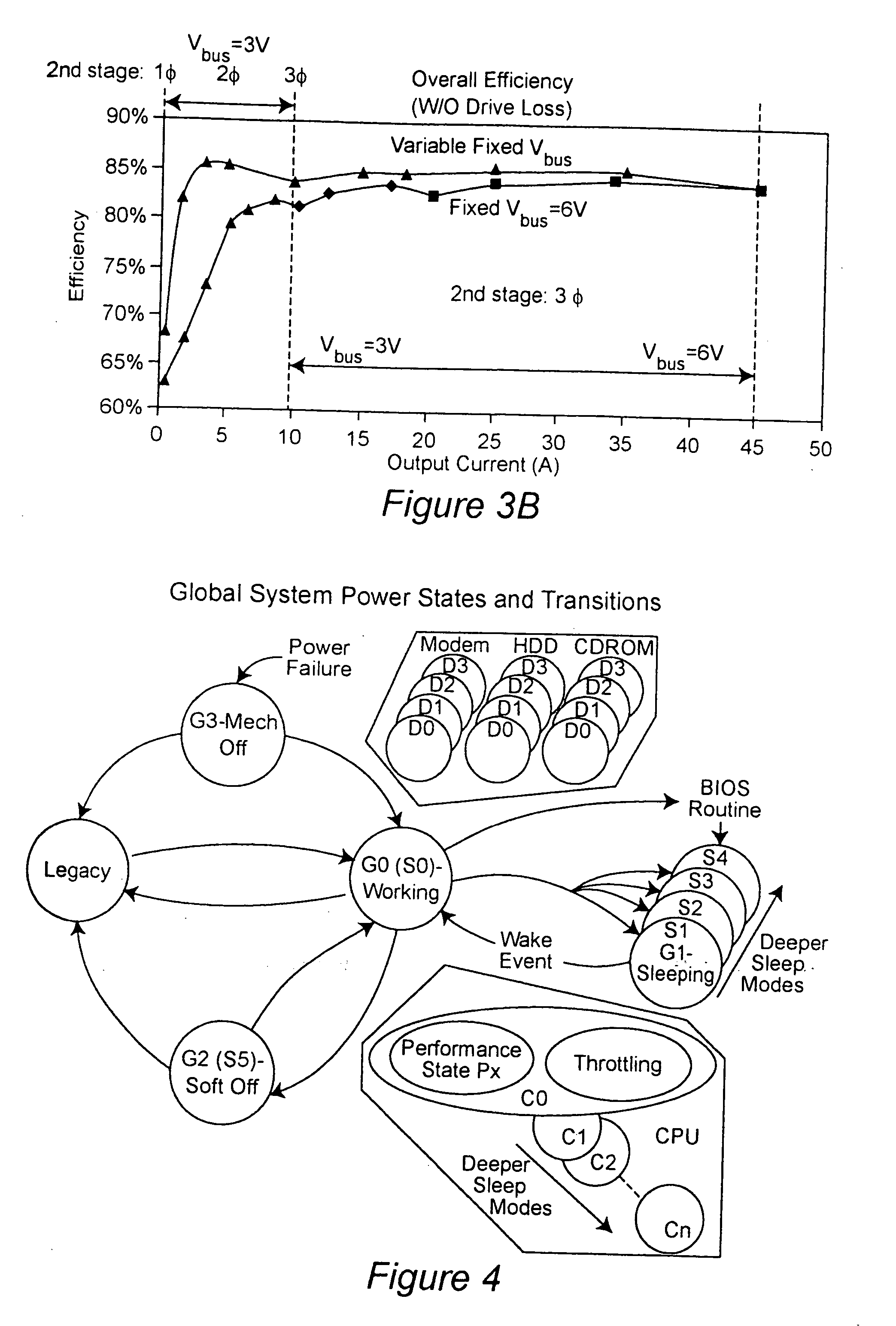Two-stage voltage regulators with adjustable intermediate bus voltage, adjustable switching frequency, and adjustable number of active phases
a voltage regulator and intermediate bus technology, applied in the direction of electric variable regulation, process and machine control, instruments, etc., can solve the problems of insignificant, low internal resistance of batteries, and inability to meet the needs of modern design, so as to increase efficiency and widen the effect of current load variation
- Summary
- Abstract
- Description
- Claims
- Application Information
AI Technical Summary
Benefits of technology
Problems solved by technology
Method used
Image
Examples
Embodiment Construction
[0037] Referring now to the drawings, and more particularly to FIG. 1, there is shown a graphical representation of an exemplary power consumption pattern for a digital processor through several cycles which each include a plurality of operating states C0, C1, C2 and C3. Operating state C0 is the working state in which the processor is performing data processing operations at the full clock rate. This working state is generally characterized by a plurality of peaks or high plateaus of processing operations interspersed with relatively lower levels of processing and power consumption as may be caused by the software controlling the operations of the processor. The working state periods are generally fairly brief and of variable duration (also dependent upon software) and are usually widely separated (generally due to at least the time required for a user to assimilate the information content of a display of the results of operations during a C0 working period and to provide a further...
PUM
 Login to View More
Login to View More Abstract
Description
Claims
Application Information
 Login to View More
Login to View More - R&D
- Intellectual Property
- Life Sciences
- Materials
- Tech Scout
- Unparalleled Data Quality
- Higher Quality Content
- 60% Fewer Hallucinations
Browse by: Latest US Patents, China's latest patents, Technical Efficacy Thesaurus, Application Domain, Technology Topic, Popular Technical Reports.
© 2025 PatSnap. All rights reserved.Legal|Privacy policy|Modern Slavery Act Transparency Statement|Sitemap|About US| Contact US: help@patsnap.com



